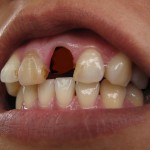
Around 16% of traumatic injuries in the permanent dentition include avulsed teeth. Children and adolescents make up the majority of patients suffering from avulsion with maxillary central incisors being the most commonly affected teeth. Damage to neurovascular and supporting structures has an adverse effect on the outcome of replantation with root resorption being a serious complication. Resorption can be internal or external although external is more common. Prognosis being considered dependent on actions performed at the place of the accident and promptly after the avulsion. A number of factors are considered to affect prognosis of periodontal healing including, stage of root development, extra-oral dry time, storage medium, extent of damage to periodontal ligament cells, presence of visible contamination, and pulp condition.
The aim of this review was to evaluate the incidence of root resorption (RR) after the replantation of avulsed teeth.
Methods
Searches were conducted in the LILACS (Latin American and Caribbean Health Sciences), PubMed Scopus, Web of Science databases. Google Scholar, Open-Grey, and ProQuest databases. Studies in humans evaluating the incidence of external (surface, inflammatory, and replacement) and internal RR after replantation of tooth avulsion in permanent teeth were considered.
Two reviewers independently assessed studies for risk of bias using the Meta-Analysis of Statistics Assessment and Review Instrument (MAStARI) critical appraisal tool for descriptive studies developed by the Joanna Briggs Institute, Adelaide, Australia. The primary outcome was the incidence and type of RR. The quality of available evidence was assessed using the Grading of Recommendations Assessment, Development and Evaluation (GRADE) tool. The results were separated according to the type of RR and random affect meta-analysis conducted.
Results
- 23 studies involving 1656 avulsed teeth were included.
- 5 studies were considered to be at low risk of bias, 14 at moderate risk and 4 at high risk of bias.
- Patient ages at the time of injury ranged for 6 – 69 years.
- Sample sizes ranged from 11-400 teeth.
| Type of root resorption | Range (%) | Meta-analysis (95%CI) |
| Internal | 0.0 – 9.0% | 1.2 (0.02–5.50) |
| Surface | 2.3 – 38.0% | 13.3 (6.21–22.6) |
| Inflammatory | 0.0 – 63.9% | 23.2 (13.94–34.19) |
| Replacement | 13.1 – 100% | 51.0 (40.10–62.00) |
- 14 studies classified the affected teeth into immature (382 teeth) and mature (996 teeth).
- Meta-analysis on subgroups by stage of tooth development was performed.
| Incidence of root resorption | Open apices | Closed apices |
| Surface | 0% – 6.2% | 3% – 6.8% |
| Inflammatory | 6.2% – 69.2% | 2.8% – 64.3% |
| Replacement | 7.6% – 56.4% | 13.1% – 68.5% |
Conclusions
The authors concluded: –
The overall result from the meta-analysis showed that the incidence of RR in avulsion was high. The incidence of RR by type included replacement RR (51.0%) followed by inflammatory RR (23.2%), sur- face RR (13.3%), and internal RR (1.2%). Because of the limitations of our study, the incidence of RR reported in this meta-analysis should be considered with caution because the confidence in cumulative evidence scored by GRADE was very low.
Comments
An extensive database search was conducted for this review although some relevant studies may have been excluded owing to language restrictions. All the included studies are observational which is to be expected however the authors highlight a lack of standardised reporting across the studies of key elements which may have an impact on outcomes. Some of the included studies providing limited information on the type of resorption and the numbers of teeth effected.
A GRADE assessment of the available evidence highlights that the quality of the evidence is very low, but the review provides a useful summary of the available data. However, while it is helpful to have an indication of the incidence of root resorption which is likely to have an impact on tooth survival. from a patients perspective, how long a replanted tooth is likely to survive and potential adverse effects are likely to be of more interest.
Links
Primary Paper
Souza BDM, Dutra KL, Kuntze MM, Bortoluzzi EA, Flores-Mir C, Reyes-Carmona J, Felippe WT, Porporatti AL, De Luca Canto G. Incidence of Root Resorption after the Replantation of Avulsed Teeth:A Meta-analysis.J Endod. 2018 Aug;44(8):1216-1227. doi: 10.1016/j.joen.2018.03.002.Epub 2018 Jun 1.Review.PubMed PMID: 29866405.
Original review protocol on PROSPERO
Other references
Dental Elf – 30th Nov 2015
Root resorption – no evidence for the effectiveness of available treatments
Dental Elf – 3rd May 2012
Pulps should be removed from replanted avulsed teeth within 14 days
